This post may contain affiliate links. Full disclosure policy

Love the taste of teriyaki but not the salt? Try Best Grilled Chicken with Coconut Aminos! Tender grilled chicken in sweet, savory, flavorful marinade. A low sodium, gluten free marinade. SO good!
Looking for more grilling recipes? Check out my collection here!
Best Grilled Chicken With Coconut Aminos – Asian Style Flavor, Way Less Salt
There’s no getting away from the fact that my mature body doesn’t process certain foods the way it did in my younger years.
For me, salt tops the list.
That’s been a bummer because some of my favorite Asian-influenced food and recipes contain a lot of salt. Switching to low sodium soy sauce helped a little, but not as much as I’d hoped.
Recently, my sister turned me on to coconut aminos. Though they’ve got a savory, umami flavor profile that’s similar to soy sauce but with way less sodium. Coconut aminos are also gluten free. Since more and more of my friends and family adhere to a gluten-free diet, this was a plus for me.
With all that in mind, I set out to a quest low sodium, gluten free marinade for grilled chicken with coconut aminos that would (hopefully) taste like teriyaki sauce. But with a lot less salt.
Spoiler alert: the quest was successful.
Best Grilled Chicken with Coconut Aminos – All Aminos Are Not Created Equal
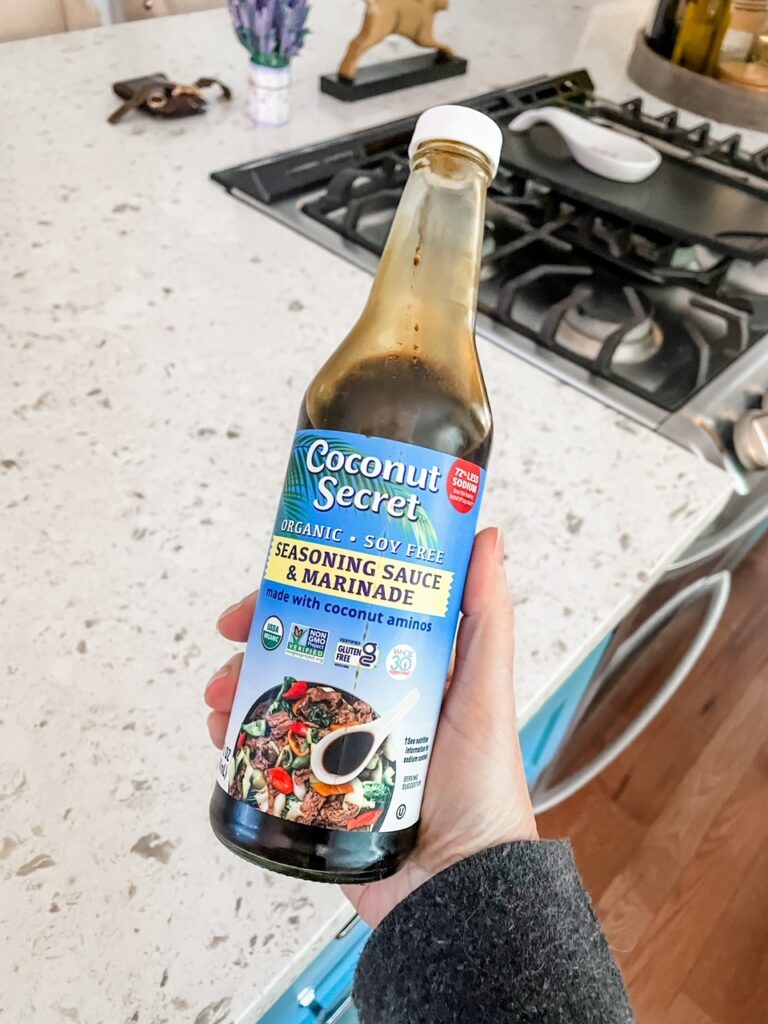
But before we go much further, let’s talk about those coconut aminos. Because as I learned the hard way, all coconut aminos are not created equal!
As I said, my sister was the one who turned me on to coconut aminos. She said they tasted similar to soy sauce but had even less salt than low-sodium soy sauce.
That sounded good to me! I went to the grocery store and grabbed the first (okay, well…really just the cheapest) bottle of coconut aminos I saw.
But after I got home, I read the label on the aminos I’d purchased and found that they actually contained MORE sodium than my low-sodium soy sauce.
The lesson? Be sure to check the label before you buy coconut aminos!
My amino of choice is Coconut Secret. It’s got a great flavor (in spite of the name, it doesn’t taste like coconut) and just 270mg of sodium per tablespoon.
To help put that in perspective, low-sodium soy sauce has 530mg of sodium. Regular soy sauce has 870 to 960mg of sodium, depending on the brand. That’s a big difference!
It’s All About The Marinade: A Low Sodium, Gluten Free Marinade
Though I had high hopes for this grilled chicken recipe, it really turned out better than I could have imagined. It’s all about the marinade, which I now think is even better than teriyaki.
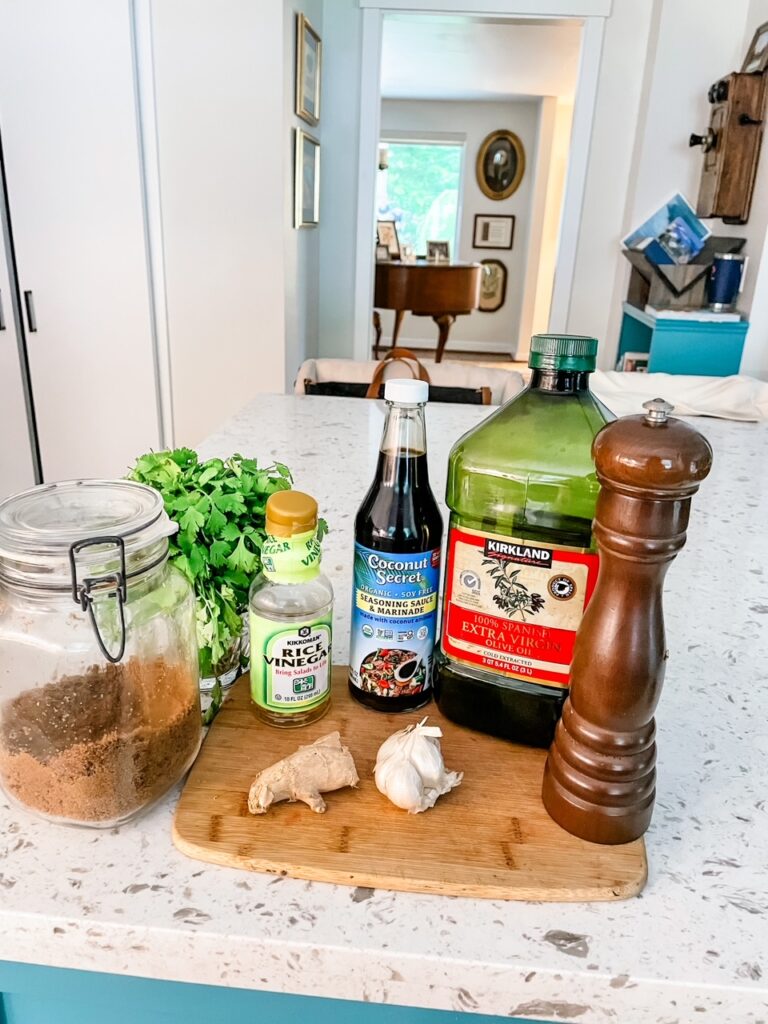
The inclusion of fresh ginger, garlic, cilantro, brown sugar, and red pepper creates a marinade that is sweet, savory, and slightly spicy all at once. The coconut aminos let those wonderful flavors come through instead of burying them under an avalanche of salt.
Also, the coconut aminos and fresh lime juice help tenderize the chicken, making it even more delicious.
As you’ll see in the recipe below, I give a range of amounts for a couple of ingredients. That allows you to make adjustments for your personal preference.
If you like things sweeter, go heavier on the brown sugar. If spice is more your thing, use the upper range of red pepper. Or add the maximum of both to get a sweeter marinade with an extra spicy kick.
My chicken of choice is generally dark meat, so I used skinless, boneless chicken thighs. But chicken breasts would be great too.
Though I haven’t tried it yet, I think this would also be a terrific marinade for steak, pork tenderloin, salmon, or even tofu!
However, because salmon and tofu are delicate, I would marinate them between 30 minutes and two hours, but no longer.
How To Make the Best Grilled Chicken with Coconut Aminos
This is a wonderfully simple recipe to prepare.
All you’ll need to do is mix the marinade ingredients together in a bowl, whisking until everything is well combined and the sugar dissolves.
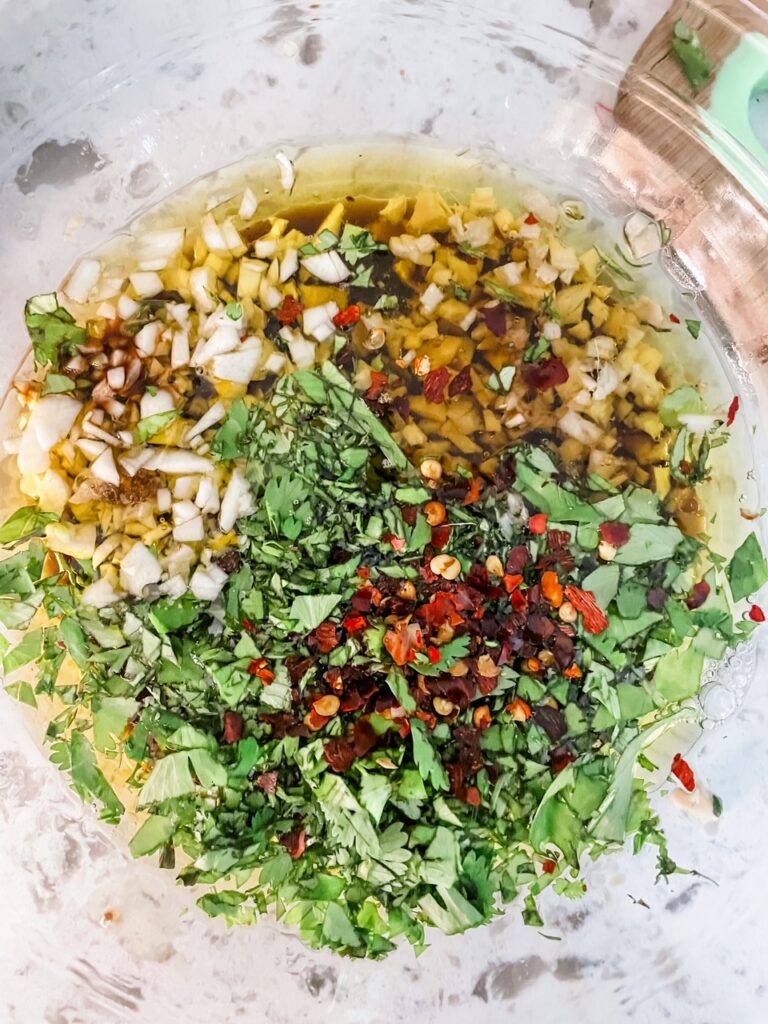
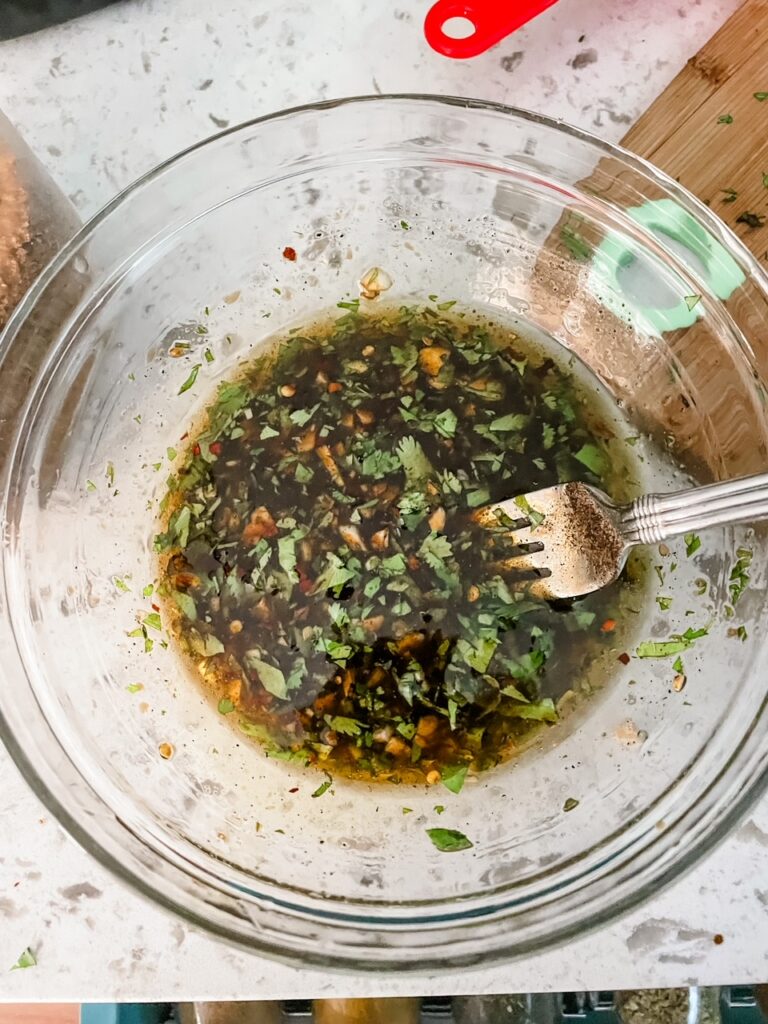
Pierce the chicken all over with the fork before placing the marinade. That will help infuse the flavors more deeply into the meat. Marinate for at least four hours or up to overnight. More is better, if you have time.
My preferred marination technique is to place the chicken and marinate a plastic zipper bag, pushing out as much air as possible when you close the bag. Leave the chicken to marinate in the refrigerator, and turn the bag over halfway through the marinating time.
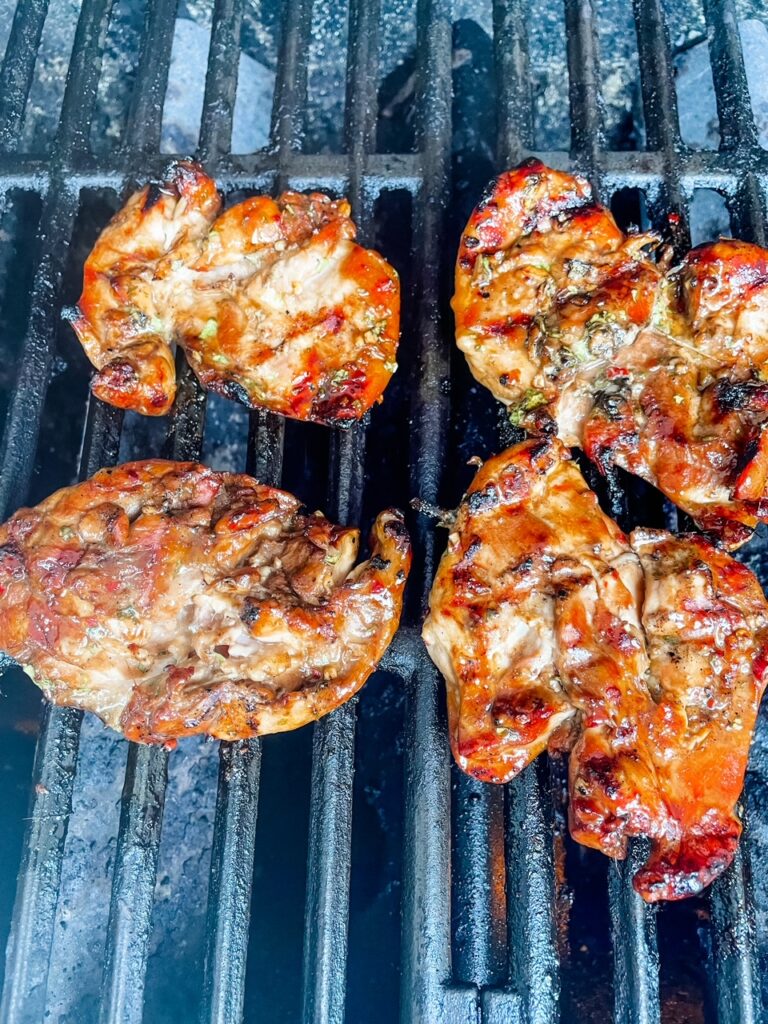
When it’s time to cook, remove the chicken thighs from the marinade and preheat your grill. Grill the chicken for about 5 minutes on each side or until the interior temperature reaches 165 degrees.
Larger or thicker thighs or chicken breasts may require more cooking time. Again, make sure the interior temperature reaches 165 before consuming.
PrintBest Grilled Chicken with Coconut Aminos – A Low Sodium, Gluten Free Marinade
- Yield: 4-6 servings 1x
Ingredients
- 1.5 pounds boneless, skinless chicken thighs (can sub chicken breasts)
- 6 T coconut aminos (prefer Coconut Secret brand)
- ¼ cup olive or vegetable oil
- 2 T lime juice
- 2-4 T brown sugar (adjust according taste)
- 2 T minced fresh ginger
- 2 T minced garlic
- 2 T chopped cilantro
- 1-2 tsp red pepper flakes (adjust according to taste)
- ½ tsp fresh ground black pepper
Instructions
- In a medium bowl, mix together the coconut aminos, oil, lime juice, brown sugar, minced ginger, minced garlic, chopped cilantro, red pepper flakes, and pepper. Whisk to combine and until the sugar is dissolved. Pour marinade into a leakproof, plastic zipper bag.
- Pierce the chicken all over with a fork. Place the chicken into the zipper bag, immersing in the marinade. Close the bag, pushing out as much air as possible. Place the closed bag on a plate and put in the refrigerator. Marinate the chicken for at least 4 hours or up to overnight, turning the bag partway through. (Can also marinate in a covered bowl, if you prefer.)
- After the chicken has marinated, preheat the grill. Remove the chicken from the bag and grill for about 5 minutes on each side, or until the interior temperature has reached 165 degrees. (Chicken breasts or larger thighs may take longer to cook. Be sure to check that the interior temperature has reached 165 before consuming.)


